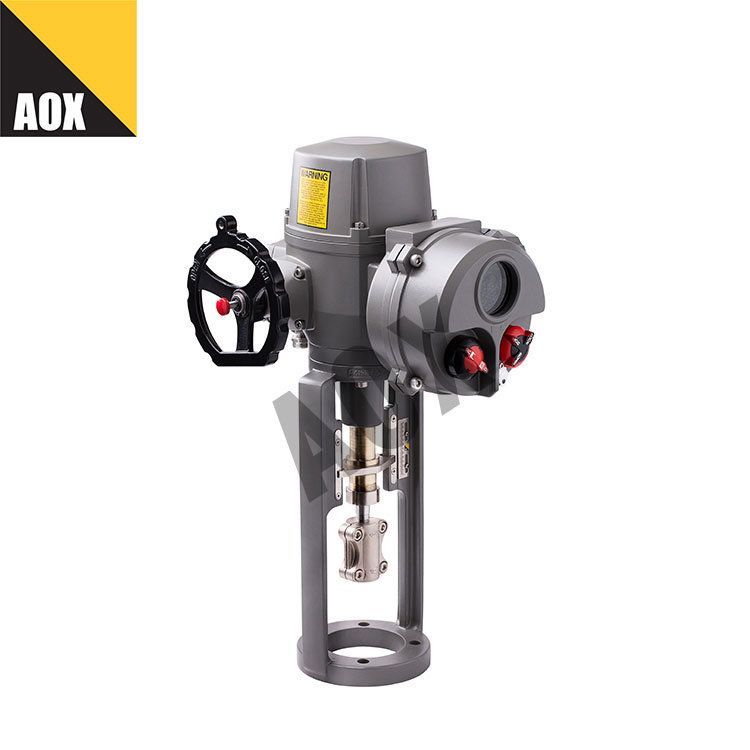Innovations in Motion Control: Advancements in Smart Linear Electric Actuators
2024-03-08
Introduction:
In the rapidly evolving landscape of industrial automation, smart linear electric actuators continue to undergo significant advancements, driving innovation and shaping future applications. These innovations not only enhance the performance and capabilities of actuators but also unlock new possibilities for automation in various industries. In this blog post, we'll explore the latest advancements in the field of smart linear electric actuators and discuss how these innovations are shaping future applications across diverse sectors.
1. Enhanced Precision and Accuracy:
One of the key areas of advancement in smart linear electric actuators is the enhancement of precision and accuracy in motion control. Manufacturers are continually refining the design and construction of actuators to achieve tighter tolerances and finer resolution, allowing for more precise positioning and control. Advanced feedback systems, such as high-resolution encoders and sensors, enable actuators to achieve sub-micron accuracy, opening up opportunities for high-precision applications in industries like semiconductor manufacturing, optics, and medical devices.
2. Integration of Artificial Intelligence and Machine Learning:
Another significant advancement in smart linear electric actuators is the integration of artificial intelligence (AI) and machine learning (ML) technologies. By leveraging AI algorithms and ML models, actuators can adaptively adjust their motion profiles, optimize performance parameters, and learn from real-time data to continuously improve efficiency and productivity. AI-driven predictive maintenance capabilities also enable proactive troubleshooting and preemptive maintenance, reducing downtime and enhancing reliability in manufacturing processes.
3. Multi-Axis Coordination and Synchronization:
Advancements in control algorithms and communication protocols enable seamless coordination and synchronization of multiple smart linear electric actuators in complex motion control systems. Actuators can synchronize their movements in multi-axis configurations, allowing for coordinated motion sequences and precise positioning of multiple components simultaneously. This capability is particularly beneficial in applications such as robotics, CNC machining, and pick-and-place systems, where synchronized motion is essential for achieving high throughput and accuracy.
4. Modular and Scalable Design:
Manufacturers are increasingly adopting modular and scalable design concepts in smart linear electric actuators, allowing for easy customization and integration into diverse automation systems. Modular actuators can be configured with various stroke lengths, force ratings, feedback options, and communication interfaces, providing flexibility to adapt to specific application requirements. Scalable designs enable seamless expansion or downsizing of automation systems as production needs evolve, ensuring future-proof solutions for changing market demands.
5. Enhanced Connectivity and Interoperability:
Advancements in connectivity technologies, such as Industrial Ethernet and wireless communication protocols, enable seamless integration and interoperability of smart linear electric actuators with other automation components and systems. Actuators can communicate with PLCs (Programmable Logic Controllers), HMIs (Human-Machine Interfaces), SCADA (Supervisory Control and Data Acquisition) systems, and cloud-based platforms, enabling real-time monitoring, remote diagnostics, and data analytics. This enhanced connectivity facilitates Industry 4.0 initiatives and smart factory automation, driving efficiency and productivity gains across the manufacturing ecosystem.
6. Environmental Sustainability:
In response to growing environmental concerns, advancements in smart linear electric actuators focus on improving energy efficiency and reducing environmental impact. Actuators incorporate energy-efficient components, such as high-efficiency motors and regenerative braking systems, to minimize energy consumption and waste. Additionally, eco-friendly materials and manufacturing processes are employed to reduce carbon footprint and promote sustainability in manufacturing operations. These advancements align with global efforts towards sustainability and green manufacturing practices, ensuring a more environmentally conscious approach to automation.
Conclusion:
The advancements in smart linear electric actuators are revolutionizing the field of industrial automation, paving the way for more efficient, flexible, and intelligent manufacturing processes. With enhanced precision and accuracy, integration of AI and ML technologies, multi-axis coordination and synchronization, modular and scalable designs, enhanced connectivity, and environmental sustainability, smart linear electric actuators are poised to drive innovation and shape the future of automation across diverse industries. By embracing these advancements, manufacturers can unlock new levels of efficiency, productivity, and competitiveness in today's dynamic manufacturing landscape.



